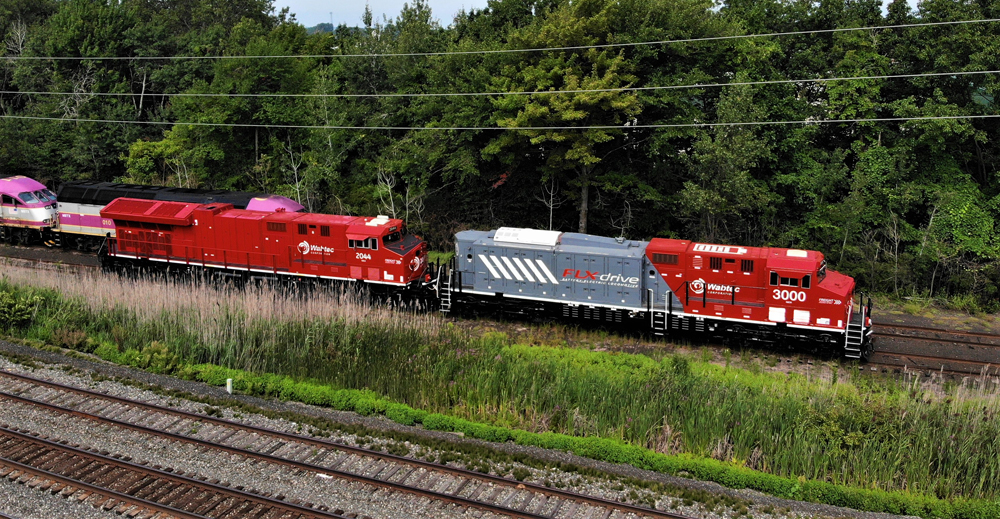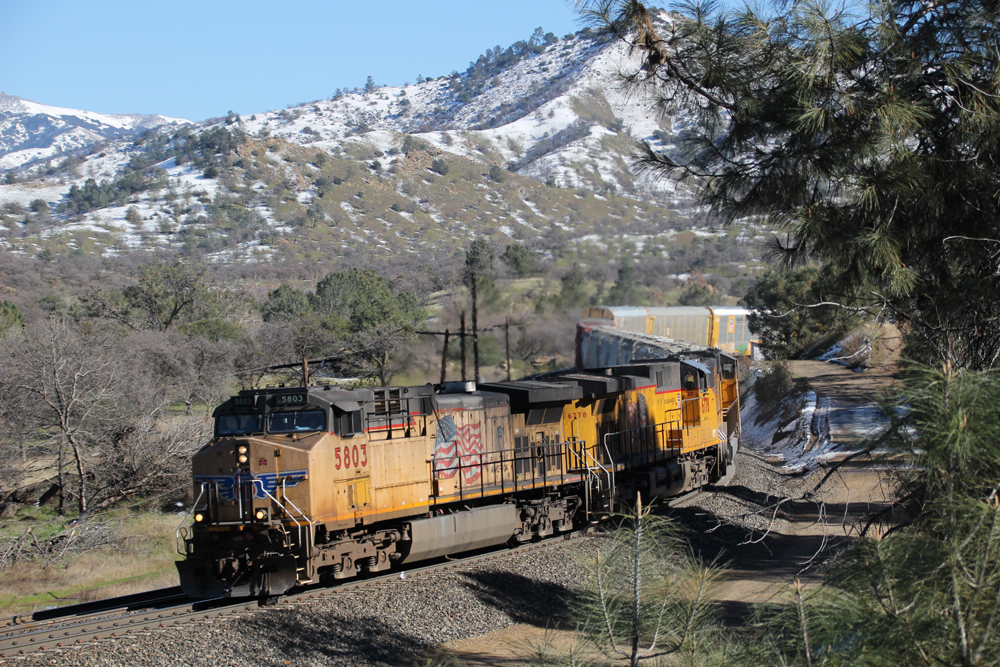
ERIE, Pa. — Wabtec’s FLXdrive battery-electric locomotive is on the road again. The demonstrator unit returned to the company’s Erie factory after concluding BNSF Railway testing in California in April [see “Wabtec, BNSF conclude initial tests …,” Trains News Wire, April 30, 2021], left the factory on Friday in the company of ET44C6 demonstrator No. 2044, now wearing a red paint scheme similar to that of the battery unit. The two locomotives are bound for the Freight 2030 event set for Sept. 10 in Pittsburgh, which will look at the future of railroading including decarbonization efforts. Trains News Wire will provide coverage of the event.














I believe Mr. Mulligan is correct: the 3000 has regenerative braking that charges the battery system automatically. Instead of all that dynamic braking heating the atmosphere, it charges, not unlike electric cars being able to recharge their battery packs on downhill driving/braking.
This makes the charging system able to activate under normal running, i.e. as an extension of the airbrake system and not exclusively acting under dynamic braking protocols. The idea is to extend the range of the initial charge through the use of regeneration, and have a ‘typical’ days range (whatever that is…), versus being totally flat after X number of hours without recharging.
If Wabtec keeps this up, they could indeed change things.
If these locomotives are paired with conventional diesels that have regenerative braking, will their batteries be recharged by the diesels regenerative brakes, or will that energy still be wasted by heating the surrounding air as they currently do?
My guess would be there would be no high-current wiring to carry power from one locomotive to another so the diesel locomotives would not be able to recharge the batteries on the battery locomotives, BUT the traction motors on a battery locomotive could easily recharge the batteries ON THE SAME LOCOMOTIVE.